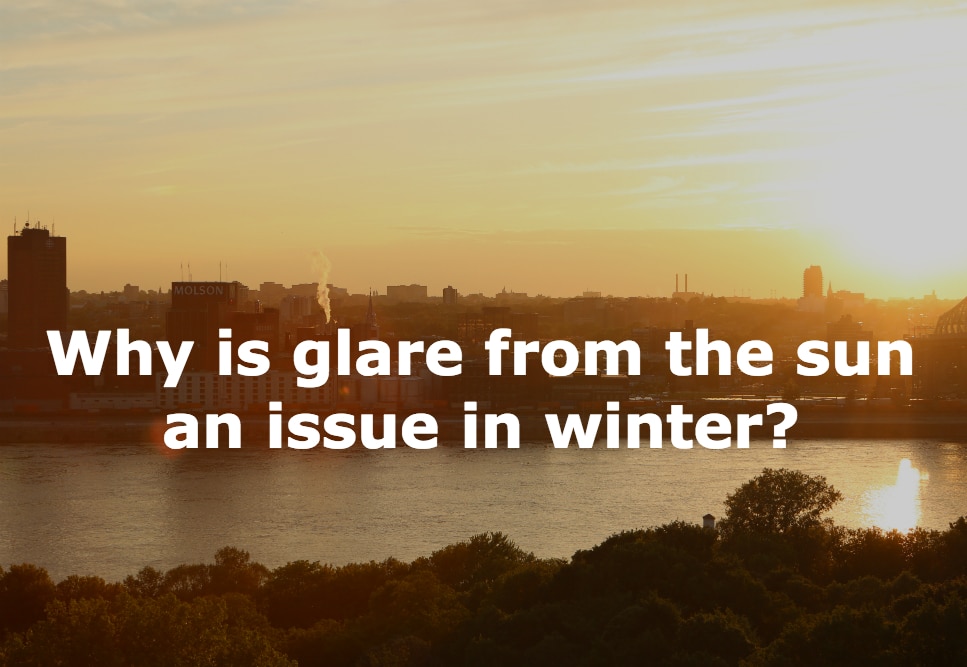
Why is glare from the sun an issue in winter?
Although winter is the darkest and coldest season, glare through an office window can be more of a nuisance than in summer. Glare problems persist all year round, but during the winter it’s particularly noticeable because the sun is low in the sky. This means that the chance of being dazzled by direct sunlight is more likely, especially in tall buildings.
Excessive glare in offices makes computer screens difficult to see and reduces productivity. Direct sunlight onto glazing can cause building interiors to overheat very quickly – even in winter. This is because short wave radiation from the sun (commonly known as light) is absorbed by the glass and is re-radiated as long wave radiation (commonly known as heat).
The best way to combat this issue is by using a reflective window blind fabric. Screen fabrics are woven fibreglass fabrics which allow a view through whilst reducing heat and glare. Fabrics such as Verosol Silverscreen have a metallised backing which faces the glass. This metal coating performs two roles: 1) it reflects heat away from the interior and 2) it coats the fabric with a barrier that light cannot penetrate thus drastically reducing the amount of diffused light entering the room.
Metallised blind fabrics have an added benefit of insulating the building at night. If the blinds are lowered the fabric helps retain heat inside the building, reducing energy costs and the building’s carbon footprints.
Adjusting blinds to suit the low winter sun and lowering blinds throughout a building at night is made much easier if the blinds are electrically operated. Advances in hard wired and battery motors have made motorised blinds a much more affordable option, and the possibility of linking them to sun sensors and building management systems allows facilities management to optimise a buildings energy performance. For more information, contact one of our specialists.